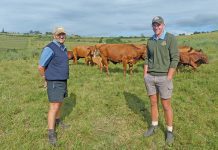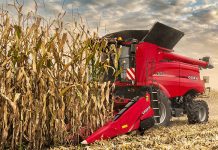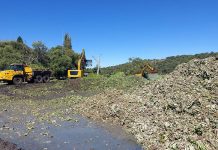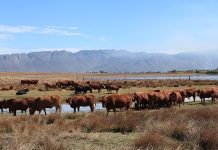Those GM issues
With reference to the By Invitation story “Hunger, too, is natural” by Dr Hinner Köster (30 January 2009).
It’s typical of the obfuscation indulged in by the Genetic Engineering brigade in their attempt to bewilder the public about the facts of Genetically Modified (GM) products. Dr Köster confuses crossbreeding for natural selection with his statement “looking at the history of agriculture, almost everything is genetically modified”. What absolute rubbish! There is a vast difference between GM and historical methods of animal and plant breeding. To produce GM organisms, genes from plants or animals are forcefully injected into the genetic structure of totally unrelated species. This means the genetic sequence is fundamentally altered. It amounts crossing a fish with a sheep, or maize with marijuana.
In the book by Jeffery Smith titled Genetic Roulette: The Documented Health Risks of Genetically Engineered Foods, it states GMs produce “massive changes in the natural functioning of plant’s DNA. Native genes can be mutated, deleted, permanently turned off or on and inserted genes can become truncated, fragmented, mixed with other genes, inverted or multiplied”.
Genetic manipulation is a very recent development, science has no way of knowing what long-term effects the products might have on humans, animals or the environment. Contrary to Dr Köstner’s assertion that “the total number of negative health consequences from synthetic pesticides and feed additives is zero”, numerous studies show a wide and frightening range of harmful side-effects in animals fed GM foodstuff. These include stunted growth, impaired immune systems, bleeding stomachs, abnormal intestinal cell growth, retarded blood cell development, misshapen livers and others. Research also shows if given a choice, animals avoid eating GM plants.
Second, Dr Köstner equates organic “all natural” farming methods with “less efficient, pre-industrial” farming methods. Is he completely ignorant of modern organic farming, or deliberately trying to bring “natural methods” of farming into disrepute? Modern organic methods are highly technical. They require a deep and complex understanding of the relationship between ecological systems and agricultural production. As to the comparative yield of organic farming, research by the University of California in Davis about yield of organic farms in the US, has shown only a slight reduction between organic and conventional methods of commercial agriculture.
In the developing world this slight difference disappears, as the 2006 World Watch Institute report titled Can Organic Farming Feed us all? shows. The report looked at over 200 agricultural projects in the developing world which converted to organic methods and concluded that for all the projects, yield increased by an average of 93%. Studies from India found average yield for cotton, wheat, chilli, and soya were as much as 20% higher. In addition, farmers had higher nett profits because of reduced input costs.
The scientific evidence about the potential of organic farming is directly the opposite of Dr Köster’s assertion.
Val Payn, Harding
Cows look better standing uphill
With reference to the letter about dairy cows photographed on boxes (30 January 2009).
Beef cattle are photographed as naturally as possible because that is what the industry requires. In the US, Canada, the UK and Europe, semen and embryos, and cattle sales are big business. This means there is a huge demand for cattle photography and a lot of money is spent on it.
Photographers are always trying to outdo each other and strive for the perfect picture to help breeders market their fancy genetics. Dairy cattle photographers overseas have taken the art to the extreme. In South Africa we are just trying to keep up with them. I have three different settings for the front-feet box to achieve a 2º lift from pins to chine. Overseas they tend to overdo it in my opinion.
Lifting the front of the cow gives the photographer more control and the cow looks bigger because the handler has to reach higher to hold it. When we still used film, it took hours to prepare the cow and then 15 to 30 minutes to take the pictures.
The hair on the top line would be brushed up and glued, finely cut hair would then be glued into the dents in order to achieve perfect lines. There are many other tricks involving glue, powder, spray paint, false tails, fishing line and woman’s make up.
More than R100 million rand is spent on semen in South Africa, including imported and illegal tapping under trees. In the early days I was once the laughing stock of the Natal branch of Taurus AI.
A farmer phoned in to order Wayne Southwood’s semen. He thought my signature was the bull’s name.
There is resistance to such photography in Australia where I hear farmers want more natural photographs with animals grazing head down.
Wayne Southwood, photographer
Why the smoke&mirrors?
For years, in Farmer’s Weekly dairy heifer and cow show photos, the animals are clearly seen standing with their front hooves on a low platform.
The execution of this practice varies from the subtle approach of Wayne Southwood, who with years of experience, goes to great pains to make the photos look as natural as possible by covering the platform with grass clippings, to the latest unsubtle offerings by Joané Otto at the Bloemfontein National Holstein and Semex Championships (23 January), where not the slightest attempt appears to have been made to hide this deception.
On the other hand, beef and dual purpose breeds are always portrayed as God made them on level ground with no trickery.
I find myself asking why this is so? What are the differences between dairy and other breeds that necessitate this attempt at an optical illusion? Are the fundamental differences so great dairymen are unable to judge the conformation of a cow standing normally, in the same way judges at human beauty pageants can only judge their subjects in high heels? Beef cattlemen have no problem at all with this.
Maybe your photo editor and show photographers, as well as breeders of dairy and beef cattle or breed societies, would like to comment.
Kobus Neilson, by e-mail
The rhino horn issue
I refer to Abré J Steyn’s article of 5 December 2009. I agree with his disgust over what’s happening to rhino, not just in South Africa, but wherever they occur.
But I disagree with him on how to tackle the situation and believe his solution would make matters considerably worse. When it was illegal to trade in ivory the killing of elephant was reduced and their numbers recovered. As soon as CITES allowed a limited trade in ivory, poaching of elephant escalated.
I ran a rhino sanctuary in north-east Kenya for 15 years, now known as the Lewa Wildlife Conservancy, where large numbers of elephant were killed, mainly by Somalis. Their deaths allowed more AK47s to fuel the current crisis. The same is happening in Chad where elephant are massacred by the Janjaweed to buy guns to kill the wretched inhabitants of Dafur. If the sale of rhino horn is legalised the killing will vastly increase, and with fewer rhino to kill the horn will become more valuable than ivory. From a practical point of view, it’s impossible to differentiate between legal and illegal horn, so legalising it could result in total disaster.
Yes, it’s possible to dehorn rhino, but the process costs more than a bullet. If a female is darted when pregnant she’s likely to abort and if darted when nursing her milk could dry up, not to mention she needs her horn to protect her calf against predators and aggressive males. And even if the horn is sawn off there is still about a kilogram in the nasal cup, making the animal worth killing.
What’s needed is for government and private owners to invest in the adequate protection of their wildlife resources. We protect great works of art, but of the great beasts with whom we share our planet we seem to think they should exist only if they are commercially viable. Anna Merz, by e-mail








